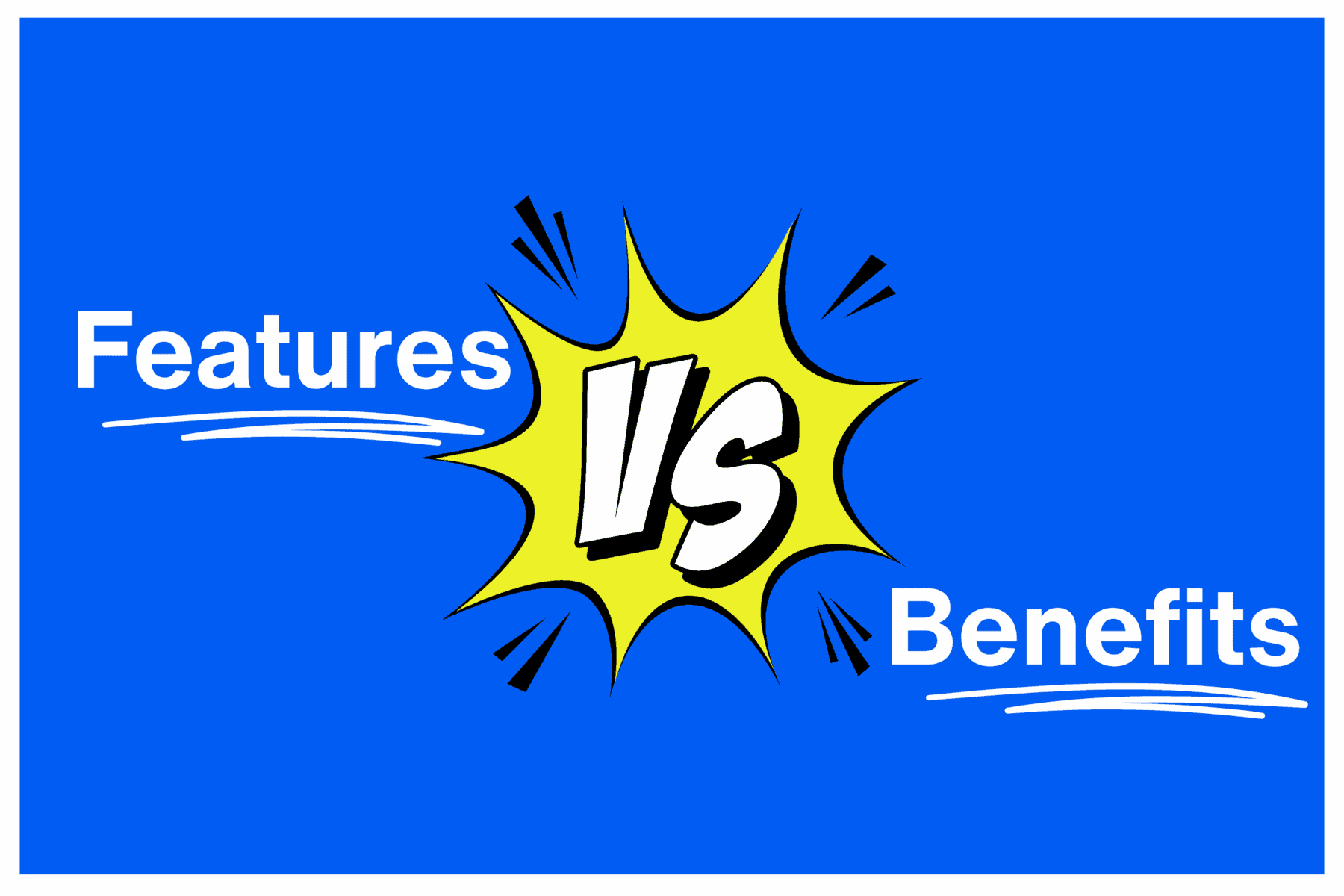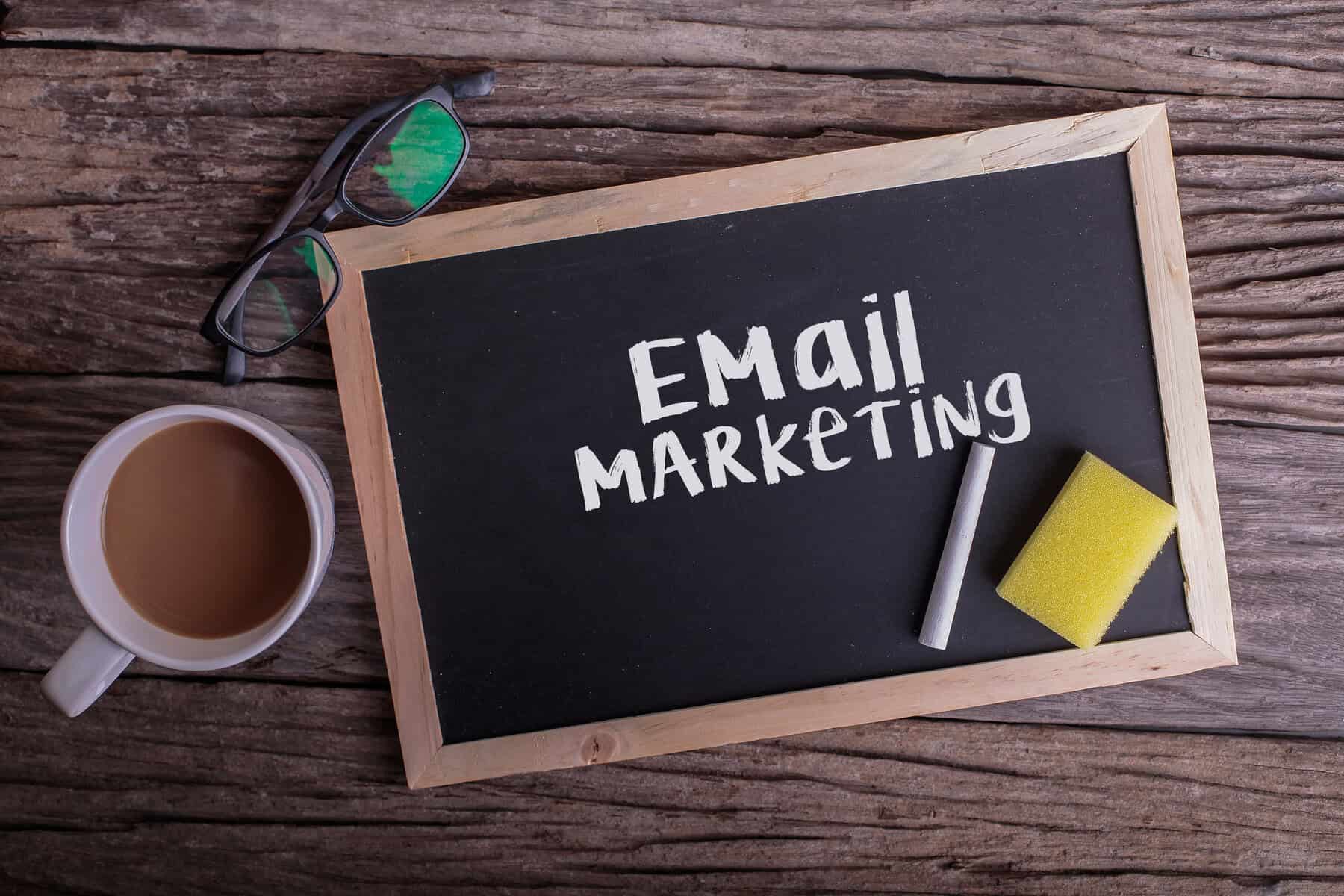A crucial element to writing compelling sales copy is understanding the difference between features vs benefits.
If you’re a business owner who’s writing your own copy, then it’s essential to know how to communicate the features and benefits to your potential customers.
As a copywriter, my job is to make sure I get the balance right of communicating key features and selling the benefits.
So, in this post, we’ll explore the following feature and benefit topics:
- What is the difference between a feature and a benefit?
- Why is it Important to Focus on Benefits Rather Than Features?
- Why Do Customers Buy Benefits vs Features?
- How to Turn Features Into Benefits
- What is an example of a Feature vs Benefit?
What is the Difference Between a Feature and a Benefit?
To craft compelling sales pages or product descriptions, you need to know the difference between a feature and a benefit.
These terms may seem interchangeable, but they represent two very different aspects of your product or service.
So, here are the explanations for features versus benefits.
What is a Feature?
A feature refers to a product’s attributes or functionality. Think of it as the factual, technical details—the “what” of your offering.
For example, a new feature in a messaging app might be its ability to support video calls with up to 50 users.
Features describe what the product has, such as a USB cable.
What is a Benefit?
But, a benefit is the “why”—why that feature matters to the user. Benefits describe how a product improves the customers’ lives. This can be by solving a problem, saving time, or helping them save money.
In the case of video calls, the key benefit might be enabling remote teams to collaborate. Fostering stronger connections.
Simply put, Features are the tools, and benefits are the emotional outcomes.
Why is it Important to Focus on Benefits Rather Than Features?
Potential customers don’t want a laundry list of technical details—they want to know how your product will improve their lives.
Highlighting features without linking them to real benefits leaves your target audience asking, “So what?”
Take a moment to consider your product’s key features and think about the benefits they deliver. For example, suppose your product is a do-it-for-you product. In that case, the benefit is saving you time.
So, Features vs benefits becomes clear: features are the tools, and benefits are the emotional outcomes.
Why Do Customers Buy Benefits vs Features?
While features matter, benefits are what ultimately sell.
The reason lies in human psychology. Customers are driven by emotional needs. Benefits describe how a product or service solves their pain points. Connecting to their emotions. Whereas features only outline its functionality.
How to Turn Features Into Benefits
If you want to craft a compelling sales page or product description, you can use a simple but effective technique – FAB (Features, Advantages, Benefits). Here’s how it works:
Describe Features
Identify the technical details of your product by making a bullet list of the key features offered.
For example, a laptop might include various features such as,
- Memory space
- Battery
- Processor
- Operating system
Highlight Feature Advantages
After listing the key features, it’s important to explain how the features work to improve the user experience.
Here are the advantages of the features mentioned above for the laptop:
- Memory Space: Offers ample storage for files, applications, and media.
- Battery: A long-lasting battery.
- Processor: A powerful processor ensures smooth performance, faster processing speeds, and the ability to handle multitasking or demanding applications effortlessly.
- Operating System: A user-friendly and efficient operating system enhances the ease of use, offering compatibility with various software and delivering a seamless computing experience.
Communicate Benefits
Translate these advantages into outcomes for the user. The key benefit.
- Battery: Enjoy uninterrupted usage throughout the day without constantly searching for charging outlets.
- Processor: Experience seamless multitasking and rapid application performance, enabling users to efficiently work, create, or play with no delays.
- Operating System: Simplifies tasks and delivers a smooth, hassle-free computing experience.
By consistently using the FAB model, you’ll bridge the gap between what your product does and why prospective customers should care.
What is an Example of a Feature vs Benefit?
Let’s use Calm as an example. Calm is a meditation and relaxation app that focuses on the benefits of its product rather than just its features.
Here’s how they approach their product marketing:
- Feature: Sleep stories and guided meditations.
- Key Benefit: Reducing stress and improving sleep quality.
In Calm’s marketing strategy, their product descriptions prioritise how these features help users lead calmer, more balanced lives. This difference is immediately obvious and sets them apart from competitors.
Features versus benefits | Final Thoughts
To write copy that sells, you need more than simply listing a product’s features. You need to answer the customer’s question about the features – “So what?”
Adding a greater emphasis on highlighting the benefits of a product or service creates an emotional connection with the customer, making the desire to buy stronger.
By mastering the art of balancing features and benefits, your marketing campaigns will resonate deeply amongst customers. Your prospective customers will see the value of your offer, and your product will shine.
So next time you’re writing product descriptions or a sales page, remember: it’s not features but benefits that ultimately win hearts—and sales.



